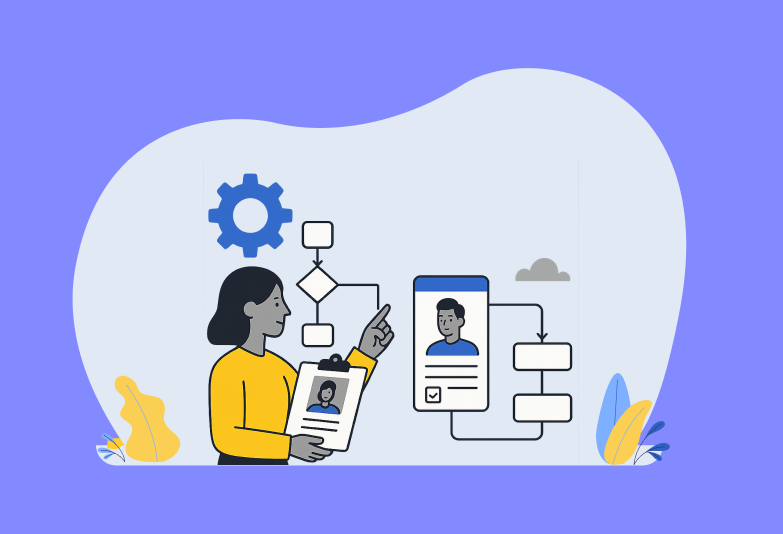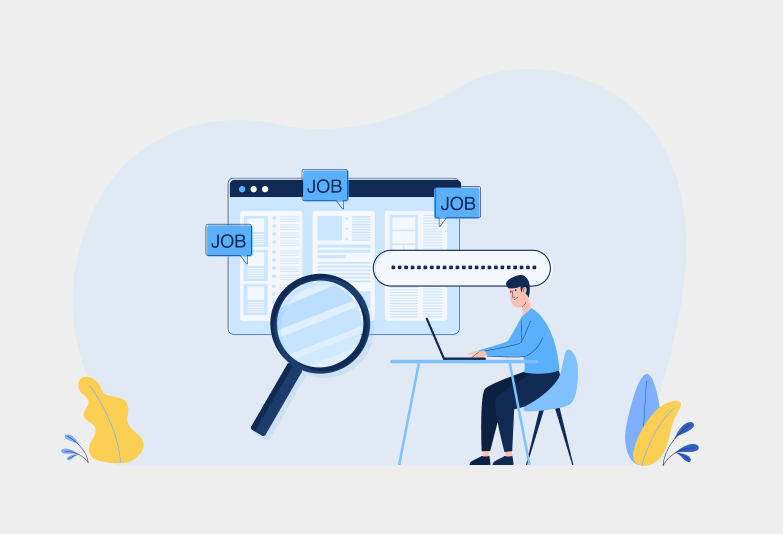In the past, many companies have underestimated the importance of human resources in improving organizational performance. With time, human resources have come a long way to become a critical business function that helps companies hire employees, keep them engaged and support their growth and development. The HR roles and responsibilities are more than just administration and not limited to a particular function; they are spread across domains and departments of a company.
Top Roles and Responsibilities of an HR
HR roles and responsibilities differ depending on the type of industry and the size of the company. Let’s look at some of the key HR roles and responsibilities that contribute to the company’s success and enhanced employee productivity.
Human Resource Planning
HR managers work with top-level executives in planning and achieving organizational objectives by engaging in identifying, preparing, and executing business goals.
They proactively participate in human resource planning. This enables them to support the company’s sustainable growth, empowering them to assign the right resources to the right project and ensuring timely delivery.
Job Analysis and Design
In order to hire the right resource for the right project, the HR managers need to make a thorough analysis of the job. The job analysis includes the following:
- Job description
- Position of the employee in the organization
- Employee’s reporting authority
- Resources needed for the employee to do the job efficiently
- Skills, work experience, etc. needed for the job role
- Salary and incentives
- Work schedule
- Personal traits such as values, interests, and personality
Additionally, the responsibilities also include:
- Task consolidation: Merge similar tasks into one job.
- Job rotation: Transfer employees from one task to another depending on the demand and skillset of the employees.
- Create high-performance teams: Build teams to work on projects that require a high level of performance.
- Job enrichment: Add more responsibilities to an employee’s job profile.
Recruitment and Selection
Recruitment and selection are not only about finding people to fill up the job roles; it’s much more than that. It’s about doing it correctly so that the perfect candidate is selected to fill the right job role. Employer branding plays a critical role in finding the right candidate for the right job. It communicates the company’s culture and work-life balance to potential employees. As more and more candidates look for jobs on social media platforms, managing the employer brand automatically becomes a responsibility of an HR professional.
Recruitment and selection is a process that involves:
- Identifying the need for a role
- Defining the requirements and the skill set needed in the right candidate
- Writing the job description
- Setting salary slabs
- Promoting the job to the right people
- Screening
- Interviewing
- Selecting the best person for the job
We have a comprehensive guide on the recruitment process to help recruiters understand the process in detail.
Training and Development
The role of HR in the training and development of employees is vital. It addresses the skill or training deficits among employees and provides them with the necessary tools to improve their skill sets and confidence and perform their job more efficiently.
Investing in employees’ developments has the following benefits:
- Increase in employee satisfaction and morale
- Improves employee retention and keeps recruitment costs to a minimum
- Makes the company more attractive to potential recruits
- Helps keep employees on top of the latest developments
Design and Optimize Work Policies
HR managers design workplace policies to protect the interests of both the employees and employers. Having policies in place ensures fewer conflicts and legal issues and improves employee productivity. Although workplace policies differ from organization to organization, some of the common things include:
- Standard operating procedures (SOPs)
- Sick leaves, Paid leaves, and time-off benefits
- Non-discrimination and anti-harassment
- Time tracking
- Meal and break periods
- Employee punctuality and attendance
HR needs to constantly revisit these policies to check if there is any tweak, update, or change is needed.
Performance Management
HR roles and responsibilities also include performance management. Facilitated by HR with the help of line managers, performance management is a tool that monitors the progress and evaluates employees’ attitude, work, efficiency, and effectiveness. This process is ongoing and generally involves a variety of integrated activities, including setting SMART (specific, measurable, achievable, relevant, and time-bound) objectives and creating a personal development plan to achieve the set goals, assessing and reviewing progress of the plan and helping employees develop skills, knowledge, and abilities to reach their goals.
By leveraging Performance Management Tools like Software or Tracking Systems, organizations can effectively facilitate performance management processes. For 93% of employees, professional growth is a priority. Through performance management, employees are given a chance to grow professionally. This helps create a positive work environment and boost employee loyalty.
Maintain Work Culture
HR is responsible for shaping and maintaining the organizational culture. The company culture is important for employee growth and employee retention. An atmosphere that helps employees learn, work, and have fun helps build a strong employee value proposition. HR leaders collaborate with other executive leaders to assess and understand the current culture, develop a strategic culture plan that aligns with the organization’s goals and values and then implement the plan across the company.
Employee Relations
Human resource management plays a crucial role in conflict resolution and in building strong employee relationships. They conduct various activities that allow employees to work well with their managers as well as their co-workers. Here are some ways HR improve employee relationships:
- Build cross-functional teams consisting of employees from different departments, combining their skills to work towards a common goal.
- Encourage social interactions by organizing potlucks and team lunches.
- Conduct team-building activities where they can share and exchange ideas.
- Equip them with communication tools with the help of technology.
- Conduct employee surveys to understand how they feel.
- Hold one on one meetings where employees can discuss ideas, issues, and concerns with their managers.
Law & Compliance
Every HR professional needs to stay up to date with the latest in employment laws and ensure that the organization’s policies comply with the latest laws. A wide range of employment laws covers many aspects of human resource practices such as:
- Performance management
- Compensation
- Recruitment
- Employee relations
- Health and safety
Health and Safety
Employees are assets, and unless they are healthy and safe, they won’t deliver their best. Therefore, it is the responsibility of the HR professionals to ensure the employees are healthy and safe.
Some of the roles HR carry out in terms of health and safety of employees include:
- Setting employee health benefits
- Arranging a doctor on call/on-premise for emergencies
- Arranging for an ambulance when needed
- Setting up a sick room for unwell employees to rest
- Organizing fire safety mock drills
- Ensuring canteen food is hygienic
Compensations and Benefits
HR’s role in compensation and benefits is to ensure decision-makers understand how these crucial aspects of employment affect the employee experience. Compensation is the basic salary offered to the employees. Benefits include social security, paid holidays, pay hikes linked to appraisals, pension plans, corporate discounts, child care facilities, gym memberships, and many more.
Company benefits help attract, retain and reward employees and are directly linked to employee productivity, efficiency and motivation.
Administration
The administrative tasks HR professionals perform include:
- Maintain employee data
- Calculate taxes
- Calculate pro-rata working hours and holidays
- Pay salaries
Rewards and Incentives
HR professionals need to create a plan to reward employees based on performance and other factors. By creating a reward program, employees are motivated to excel at their job. It makes them feel valued, increases job satisfaction, and boosts productivity. Some rewards and incentives include holiday packages, promotions, and bonuses.
How can ATS help in HR roles and responsibilities?
Jobsoid, an ATS, streamlines the recruitment process for HR professionals and reduces the time-to-hire and cost-per-hire. Jobsoid offers these main benefits to make the job of HR professionals easier:
- Attract top talent
- Source better candidates
- Track applicants effectively
- Collaborate with the hiring team
- Communicate effectively with candidates
- Schedule interviews
- Generate reports to keep track of your recruitment progress
There’s a lot more to Jobsoid than the benefits mentioned here. If you want to know how Jobsoid can help you with your HR roles and responsibilities, we recommend you to use our free version. You can also access it by signing up here.



